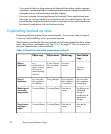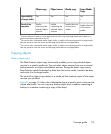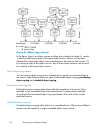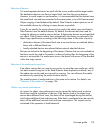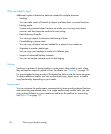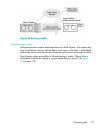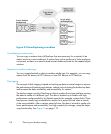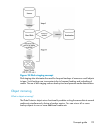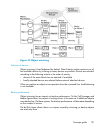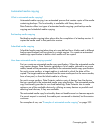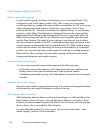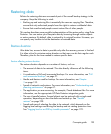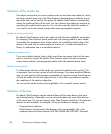The result of a successful backup session with object mirroring is one media set
containing the backed up objects and additional media sets containing the mirrored
objects. The mirrored objects on these media sets are treated as object copies.
Benefits of object mirroring
The use of the object mirror functionality serves the following purposes:
• It increases the availability of backed up data due to the existence of multiple
copies.
• It enables easy multi-site vaulting, as the backed up data can be mirrored to
remote sites.
• It improves the fault tolerance of backups, as the same data is written to several
media. A media failure on one medium does not affect the creation of the other
mirrors.
Object mirror operation
In a backup session with object mirroring, each selected object is backed up and at
the same time mirrored as many times as specified in the backup specification. See
Figure 35 on page 121.
Let us take Object 3 in the figure as an example. The Disk Agent reads a block of
data from the disk and sends it to the Media Agent that is responsible for the backup
of the object. This Media Agent then writes the data to the medium in Drive 2 and
forwards it to the Media Agent that is responsible for mirror 1. This Media Agent in
turn writes the data to the medium in Drive 4 and forwards it to the Media Agent
that is responsible for mirror 2. This Media Agent writes the data to the medium in
Drive 5. At the end of the session, Object 3 is available on three media.
Planning your backup strategy120



